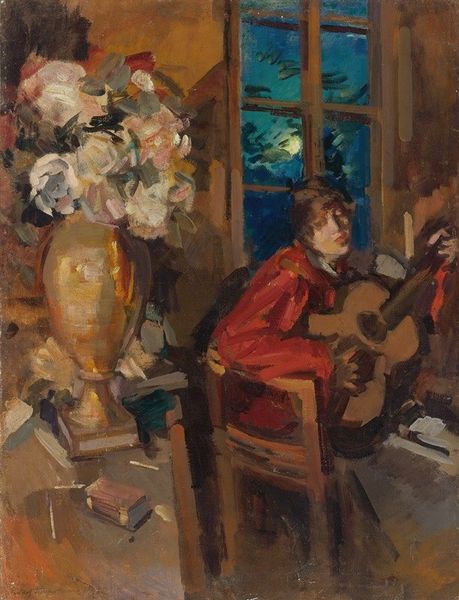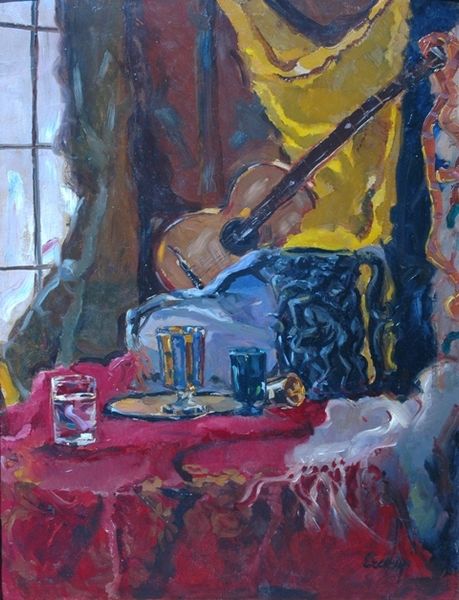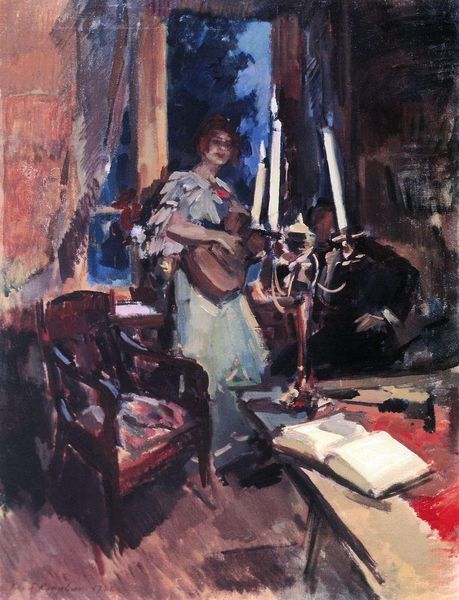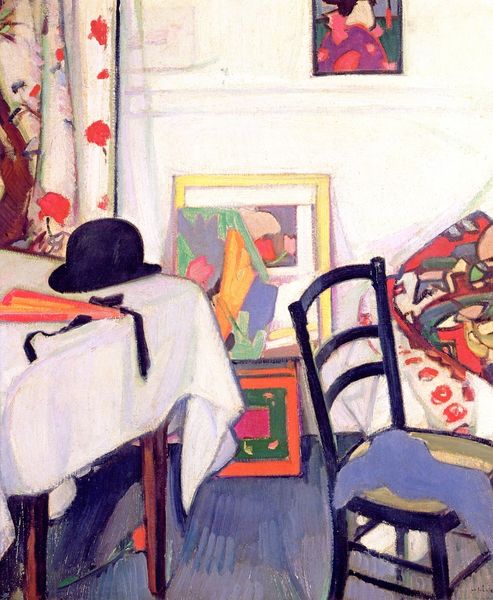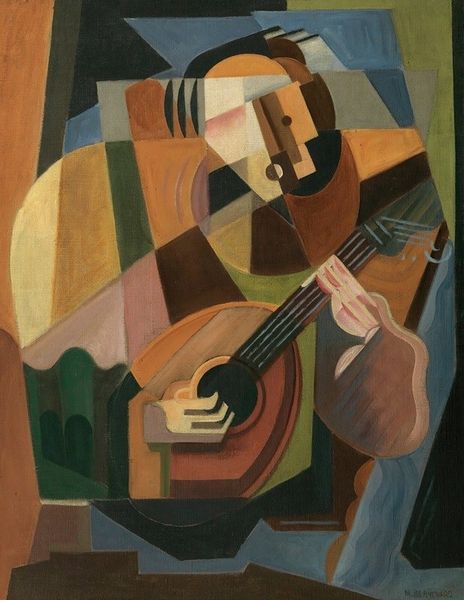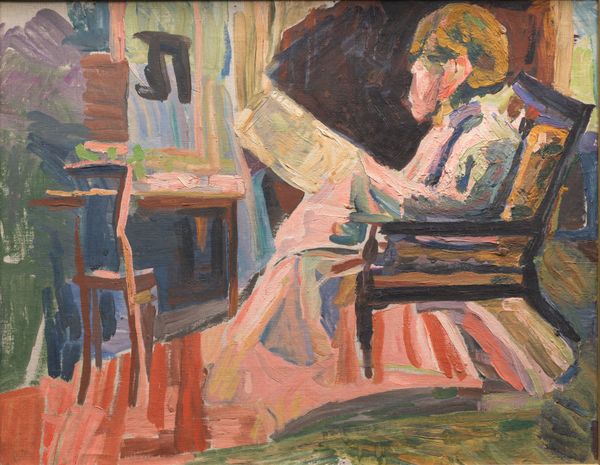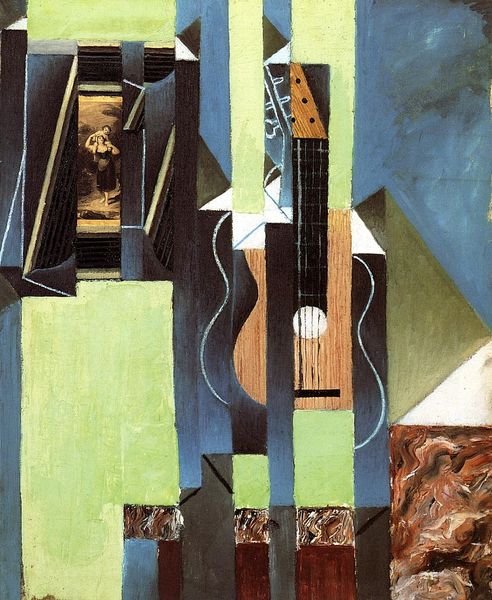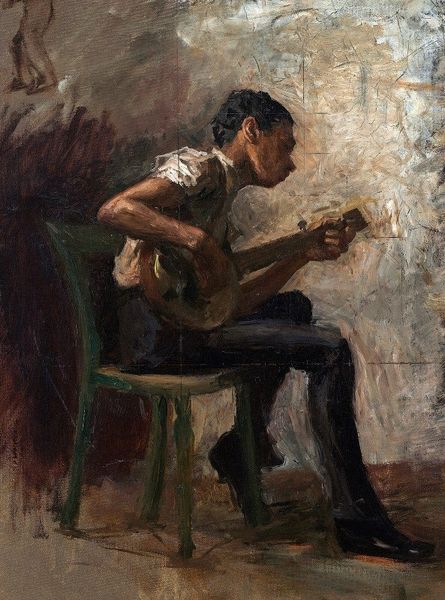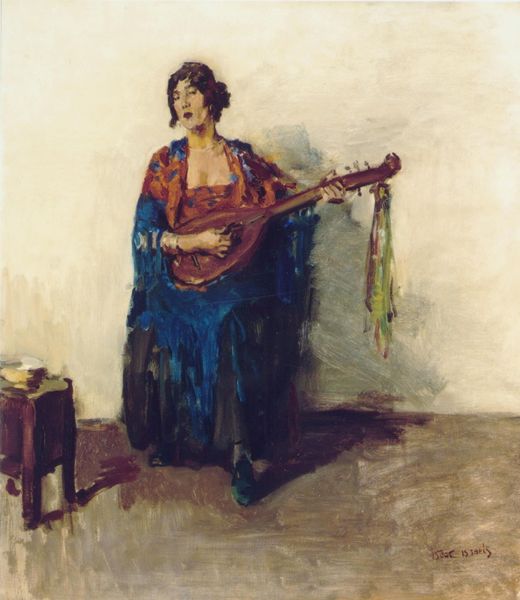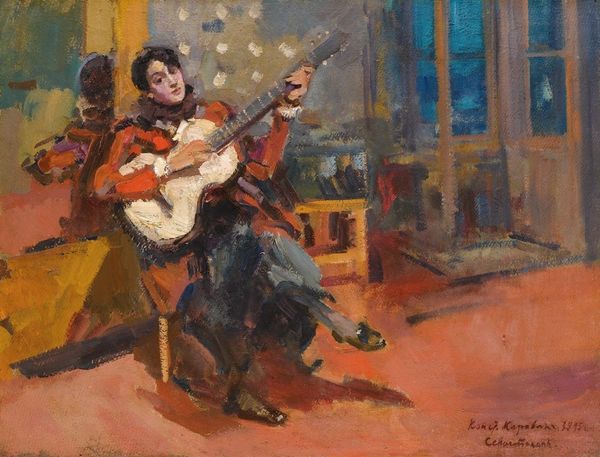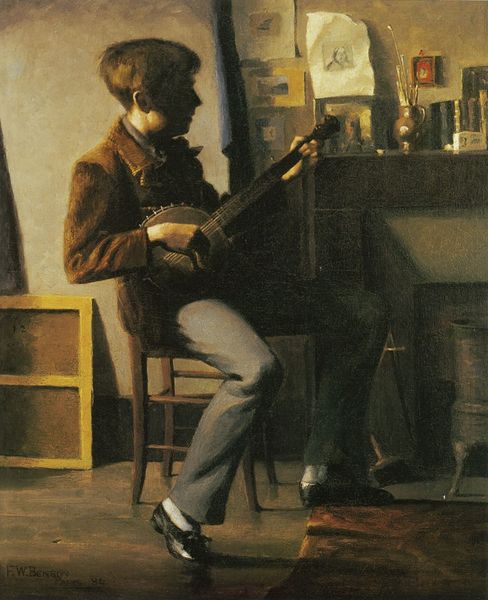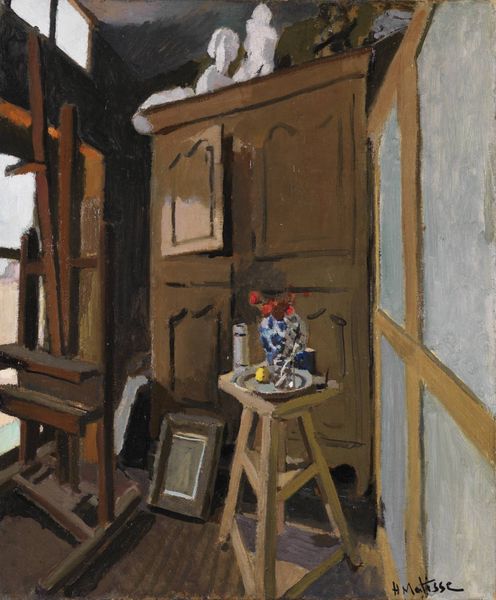
Copyright: Public domain US
Curator: At first glance, there’s an intimate stillness about Matisse's "Guitarist." The loose brushstrokes and muted tones give the painting an air of relaxed contemplation, despite the complexity of the scene. Editor: This oil on canvas, dating from 1903, provides a glimpse into Matisse's artistic evolution, predating his full embrace of Fauvism. Note how genre-painting traditions allowed him to explore burgeoning modernist principles of composition and color. Curator: Compositionally, it's interesting how the flatness of the floral patterned backdrop contrasts with the roundness of the guitar and the figure’s limbs. There's a tension between the decorative and the representational, something that would become more pronounced in his later work. What strikes you most about it? Editor: Well, I’m immediately drawn to the figure. The guitarist is somewhat hidden, their features obscured by shadow, as though absorbed into the very music they’re creating. I wonder, is this an anonymous musician, a genre trope, or does this anonymity point to more subtle power dynamics at play within café society at the turn of the century? Curator: That's a great point about anonymity. There’s a universal quality, almost melancholic, but consider Matisse’s place among the Parisian Avant-Garde and you see him playing to the changing cultural roles around artistic expression and the rising public interest in café and performance culture. He’s capturing a societal shift, the rising visibility of informal music scenes. Editor: You know, even just the color relationships themselves are rather telling. That muted yellow guitar is really the only intense colour in the composition. It directs your attention and really reinforces a focus around this practice of music as almost a generative source, while the rest of the painting hangs back, remaining suggestive but not explicit. It is like colour holds an intentionality for Matisse. Curator: It speaks to his growing preoccupation with pure color, but within the constraints of genre-painting traditions, showing that he really understood the role he would later come to occupy. It serves as a fascinating prelude to the explosion of color that would soon define Fauvism. Editor: A pivotal point of experimentation, beautifully articulated in both color and form. Curator: Exactly, and an image ripe for considering not only artistic expression, but the public spaces that came to nurture it.
Comments
No comments
Be the first to comment and join the conversation on the ultimate creative platform.
